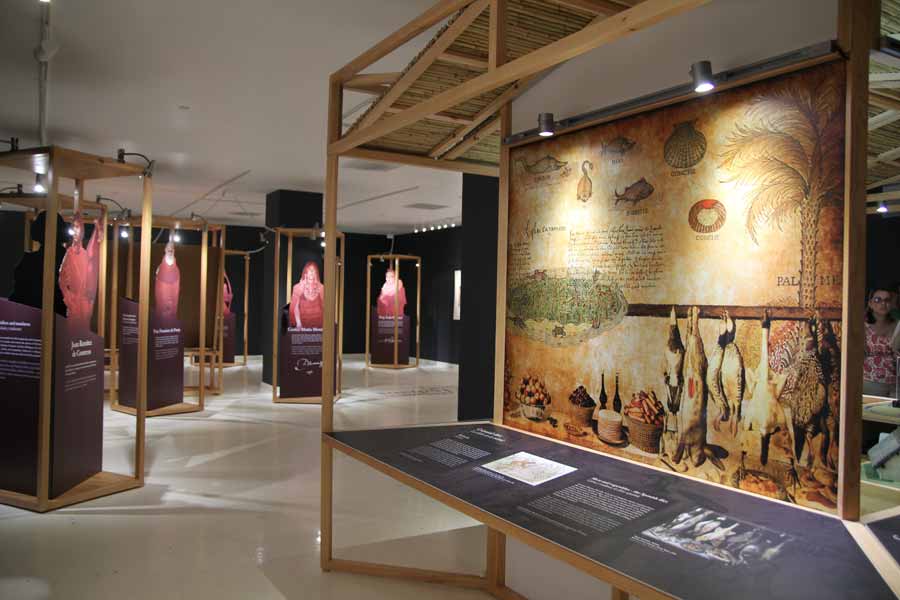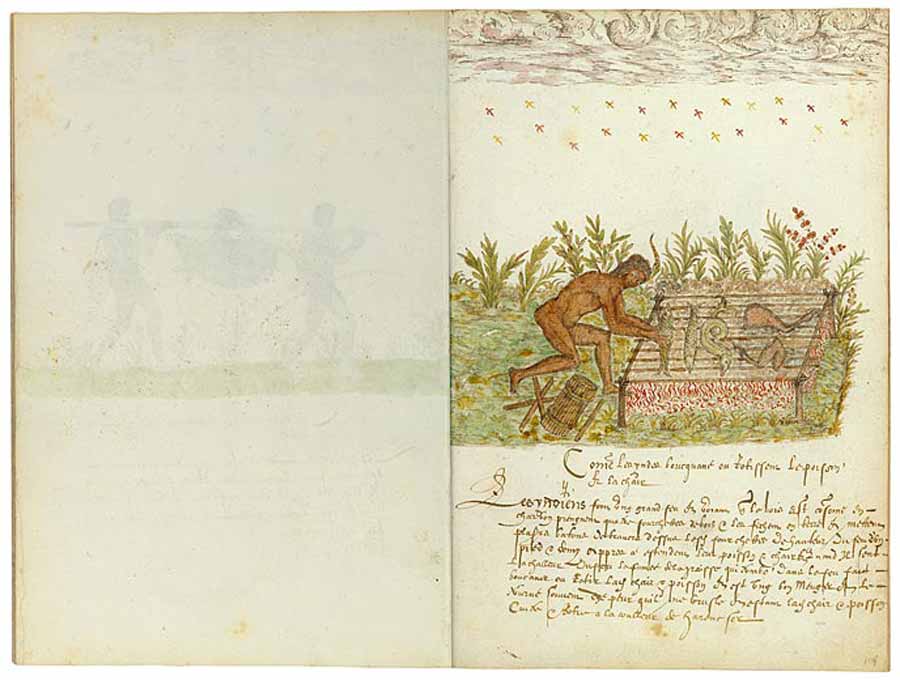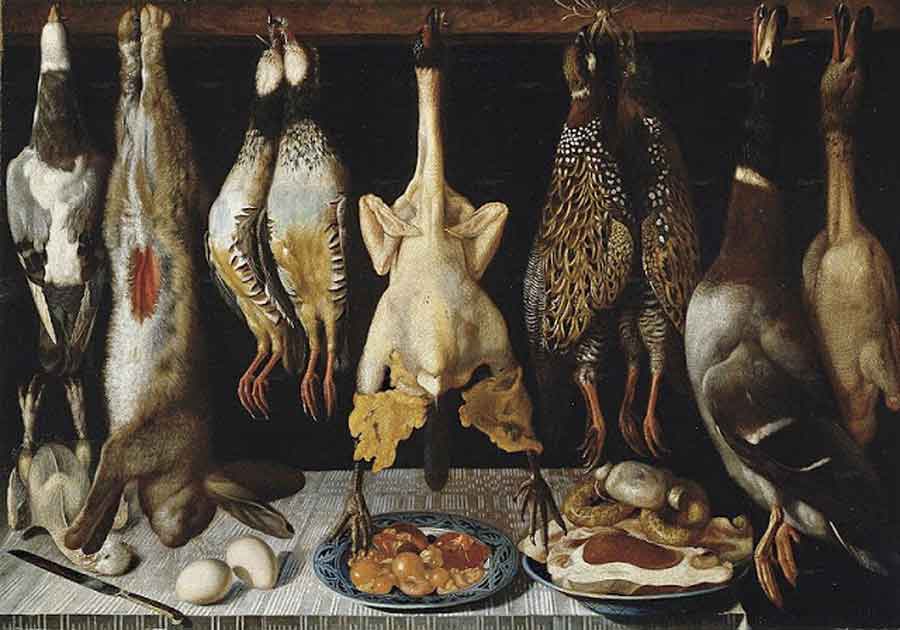
Colonial Diet

Barbecue
"The Indians make a big fire and when they see the wood turning to charcoal, they take four wooden forks, drive them into the earth and lay several sticks across the forks, a foot and a half above the fire. Then, when they feel the heat of the fire, they spread their fish and meat out upon it, and the smoke from the fat dripping into the fire smokes or roasts the meat and fish, which are good for eating. They turn them often for fear of burning them, and when the meat and fish are cooked, they have the color of a red herring." Drake Manuscript, Histoire Naturelle des Indes, 1586.

Indian barbecue, Drake Manuscript, Natural History of the Indies, 1586.
The Morgan Library and Museum, New York, NY.
Meat and vegetables - the Spanish diet.
Francisco Martínez Montiño, head chef of Philip II of Spain, compiled almost 500 authentic Spanish recipes such as "olla podrida en pastel" (literally: decomposed stew in bread):
"Boil the meat of the decomposed stew, boiling chicken, beef, mutton, a piece of pork fat and all fowls, such as pigeon, partridge and thrush; pork loin, spicy sausages, small sausages, hare and blood sausage; all of this must be roasted before being boiled. In a separate pot, boil cured meat, cow and pig tongues, ears and sausage; put the liquid from both pots into a separate pan, in which you need to boil the vegetables, cabbage, turnips, parsley and mint”. Francisco Martínez Montiño, Art of cookery, patisserie, baking and preserving, 17th century.

Still life of fowl and hare, Tomás Yepes, 1642.